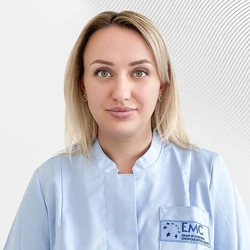Sometimes children talk about unusual symptoms and parents can't figure out what's causing them. This article presents 10 symptoms that indicate health problems and require special attention.
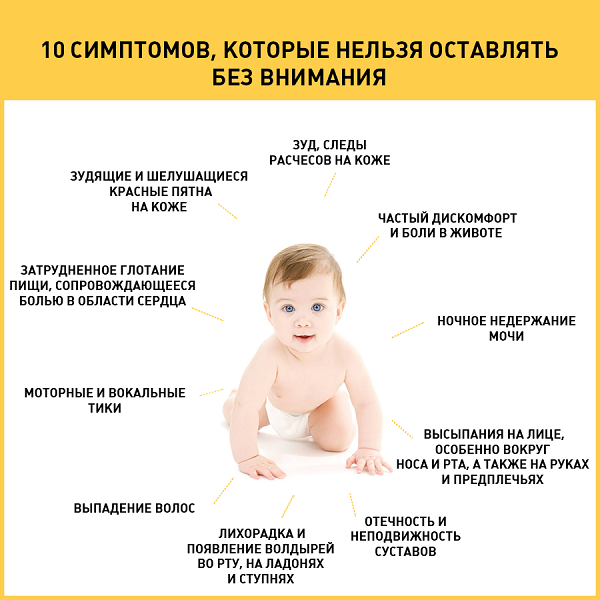
1. Frequent discomfort and abdominal pain.
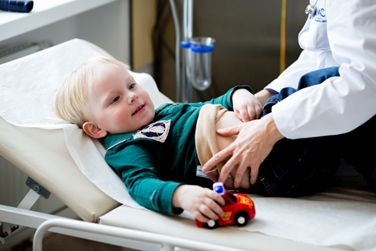 Children periodically complain of abdominal pain. However, frequent pain and bloating can be symptoms of a more serious illness, especially if they are accompanied by chronic diarrhea, white stools with a characteristic pungent odor, gas, irritability and unexplained anemia or low red blood cell count.
Children periodically complain of abdominal pain. However, frequent pain and bloating can be symptoms of a more serious illness, especially if they are accompanied by chronic diarrhea, white stools with a characteristic pungent odor, gas, irritability and unexplained anemia or low red blood cell count.
If a child has these symptoms, it is necessary to conduct a study on the presence of gluten disease – the inability to digest gluten (a protein found in some cereals). Eating gluten leads to the destruction of small, hairy particles covering the inner surface of the small intestine and can cause vomiting. If the presence of this disease is suspected, it is necessary to keep a food diary in which to indicate the body's reaction to certain foods. It is important to exclude gluten-containing foods from the diet and further evaluate the result. If symptoms persist, you should contact to a pediatric gastroenterologist.
2. Fever and blisters in the mouth, palms and feet.
Such symptoms most often indicate the so-called hand-foot-mouth syndrome, rather than a similar lesion of the legs and mouth that occurs with foot-and-mouth disease (an acute viral disease characteristic of both animals and humans). Despite the wounds that can appear even on the buttocks, the disease is harmless to most children and does not require treatment. The symptoms disappear after 7-10 days. If such symptoms are detected, we recommend that you contact to the pediatrician.
3. Rashes on the face, especially around the nose and mouth, as well as on the arms and forearms.
Impetigo is a skin infection that can manifest anywhere on the body, but often begins on the face. Impetigo can be caused by two types of bacteria: Streptococcus type A or Staphylococcus aureus. Type A streptococcus causes a rash in the form of small pustular formations that burst and leave red spots on the skin. At the site of the formations, a liquid is secreted, which hardens into honey-colored crusts. If impetigo is caused by staphylococcus aureus, large pustules appear on the skin, which open less frequently and contain a liquid that gradually turns from transparent to cloudy. It is advisable not to injure the affected areas of the skin to prevent the spread of infection, and use aseptic soap when washing. Immediately contact to the pediatrician for recommendations.
4. Itchy, scratchy skin.
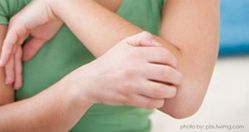 Itching in the evenings usually increases, and thin irregular comb marks appear on the head, face, neck, palms, feet, in the folds of the skin between the fingers, in the armpits, on the inside elbow parts and other body parts? These symptoms may be manifestations of scabies, a contagious skin disease caused by various types of mites that create passages under human skin. This disease responds well to treatment, but for this it is necessary to contact a dermatologist for diagnosis and recommendations on this problem.
Itching in the evenings usually increases, and thin irregular comb marks appear on the head, face, neck, palms, feet, in the folds of the skin between the fingers, in the armpits, on the inside elbow parts and other body parts? These symptoms may be manifestations of scabies, a contagious skin disease caused by various types of mites that create passages under human skin. This disease responds well to treatment, but for this it is necessary to contact a dermatologist for diagnosis and recommendations on this problem.
5. Itchy and flaky red spots on the skin.
 Such spots may have the shape of a ring with pronounced external borders. Hence the name "Ringworm", which means "ringworm". This condition is more common in children and is a contagious skin disease caused by a fungus rather than parasites. This disease is usually transmitted from pets or through personal hygiene items, clothing. A dermatologist will make an accurate diagnosis and prescribe an antifungal ointment or cream.
Such spots may have the shape of a ring with pronounced external borders. Hence the name "Ringworm", which means "ringworm". This condition is more common in children and is a contagious skin disease caused by a fungus rather than parasites. This disease is usually transmitted from pets or through personal hygiene items, clothing. A dermatologist will make an accurate diagnosis and prescribe an antifungal ointment or cream.
6. Difficulty swallowing food, accompanied by pain in the heart area.
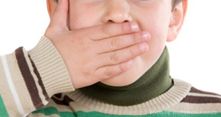 When gastric juice and food from the stomach are thrown into the esophagus, and the taste of food is felt in the throat, this is a symptom of gastroesophageal reflux disease (GERD). The main sign of GERD is heartburn or pain behind the sternum, in the lower chest, or in the middle of the abdomen. Children under the age of 12 also experience difficulty swallowing food, nausea, coughing, wheezing, as with asthma, and belching. If GERD is suspected, the child must be shown gastroenterologistand reduce the portion size, exclude caffeinated and carbonated drinks, chocolate, spicy, sour, fried and fatty foods.
When gastric juice and food from the stomach are thrown into the esophagus, and the taste of food is felt in the throat, this is a symptom of gastroesophageal reflux disease (GERD). The main sign of GERD is heartburn or pain behind the sternum, in the lower chest, or in the middle of the abdomen. Children under the age of 12 also experience difficulty swallowing food, nausea, coughing, wheezing, as with asthma, and belching. If GERD is suspected, the child must be shown gastroenterologistand reduce the portion size, exclude caffeinated and carbonated drinks, chocolate, spicy, sour, fried and fatty foods.
7. Motor and vocal tics.
Motor tics are repetitive involuntary muscle spasms, such as blinking, grimacing, sudden head turns, etc. Vocal tics are the unintentional repetition of sounds, such as coughing, barking, or repeating words you hear. People who have tics cannot control themselves and often feel uncomfortable in society. This condition is often associated with Tourette's syndrome. Children with Tourette's syndrome have both short-term simple and complex tics that involve different muscle groups. Unfortunately, this syndrome increases the risk of emotional problems, anxiety disorders, learning and socialization problems. A child psychologist or psychiatrist will help the child cope with this syndrome.
8. Swelling and immobility of joints.
If the child has not been injured, but these symptoms are present, he may have arthritis. It sounds implausible, but juvenile rheumatoid arthritis is quite common in children under 16 years of age. Symptoms may appear and disappear. Early symptoms usually include stiffness of the joints in the morning, as well as soreness in the wrists, fingers, or knee joints. Joints may swell, stiffness in the neck and hips may occur, and rashes may appear and disappear. In the evenings, the temperature may rise, decreasing the next morning. In this situation, you need pediatrician's consultation.
9. Hair loss.
 Have you changed the baby shampoo, but the hair loss still continues? The cause of this problem may be of an immunological nature. When white blood cells "work intermittently," they attack the hair follicles, resulting in alopecia areata. This phenomenon is more common in children than in adults. In most cases, after a few months, the hair loss stops and normal hair growth is restored. A pediatric dermatologist analyzes the affected areas and, depending on the patient's age and severity of the condition, prescribes steroid injections.
Have you changed the baby shampoo, but the hair loss still continues? The cause of this problem may be of an immunological nature. When white blood cells "work intermittently," they attack the hair follicles, resulting in alopecia areata. This phenomenon is more common in children than in adults. In most cases, after a few months, the hair loss stops and normal hair growth is restored. A pediatric dermatologist analyzes the affected areas and, depending on the patient's age and severity of the condition, prescribes steroid injections.
10. Bedwetting.
Has your child experienced this problem before today? Has the baby been drinking more lately, so the parents conclude that he drank too much liquid at night? The solution to this problem is obvious: the child should drink less or go to the toilet before going to bed. However, first you need to check if the baby has any additional symptoms: constant fatigue or irritability, constant hunger, decreased academic performance, sudden weight loss. Each of these symptoms is a reason to consult a pediatrician to rule out the presence of type II diabetes (a metabolic disorder in which the body does not produce enough insulin to control sugar levels). This disease is no longer considered an adult disease. Eating large amounts of fats and carbohydrates, along with a sedentary lifestyle, has led to an increase in the number of children diagnosed with diabetes. To correctly diagnose this disease, please visit Department of Pediatrics.












.webp)
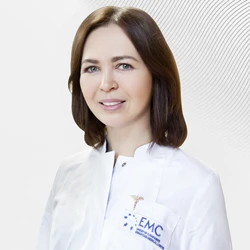
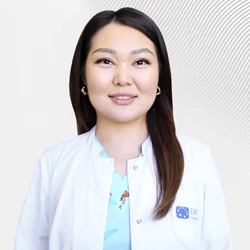


.webp)




